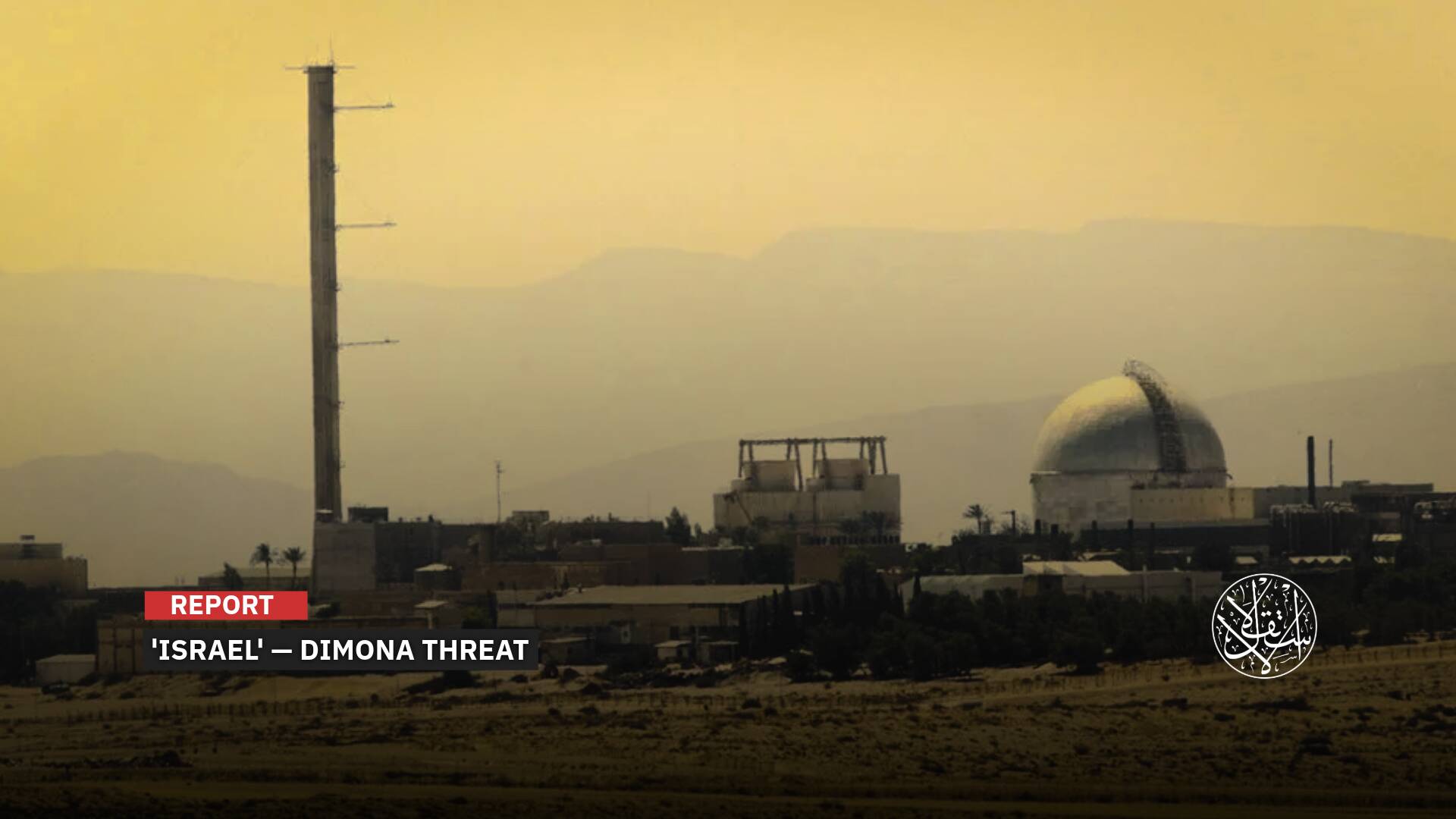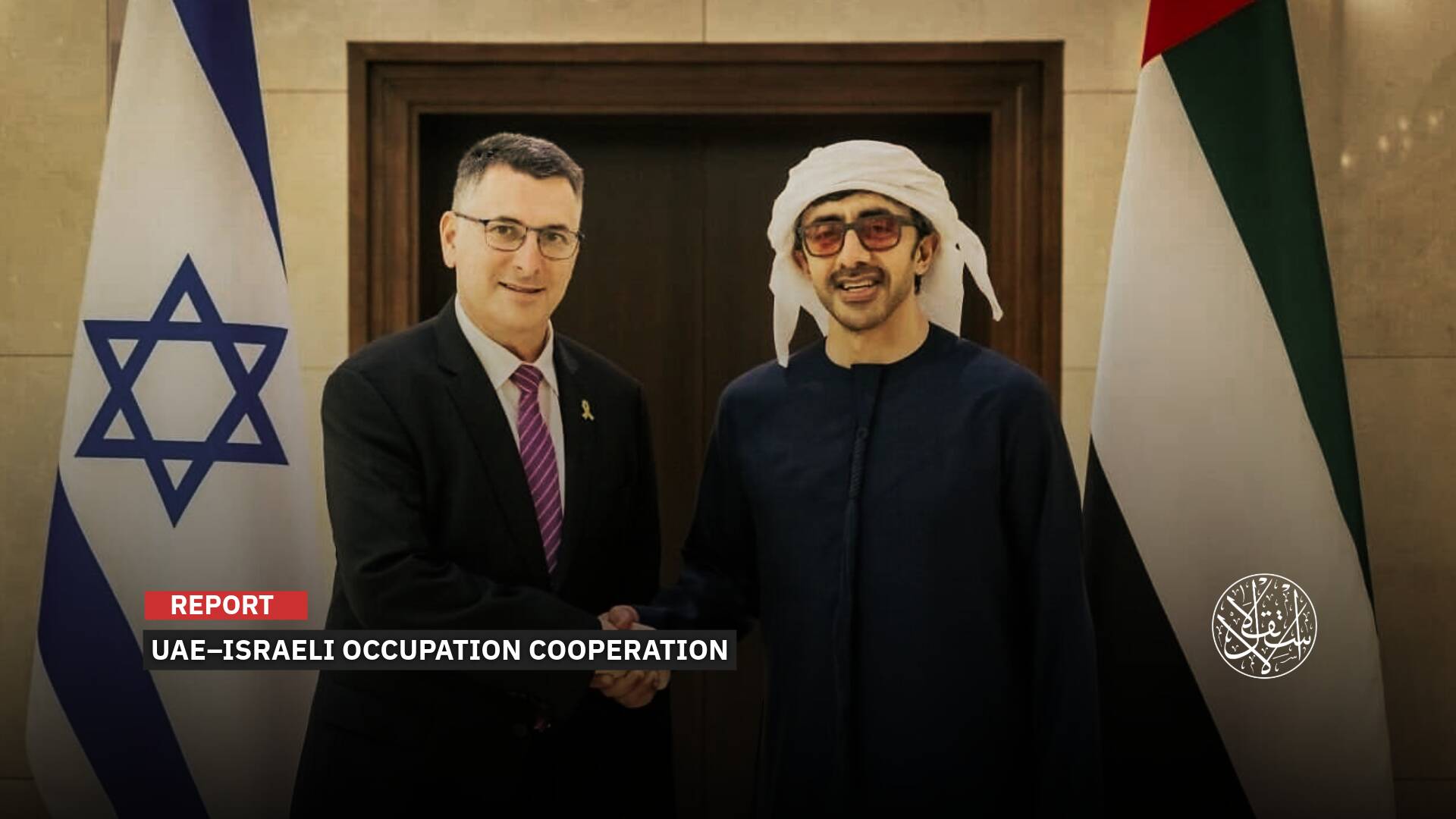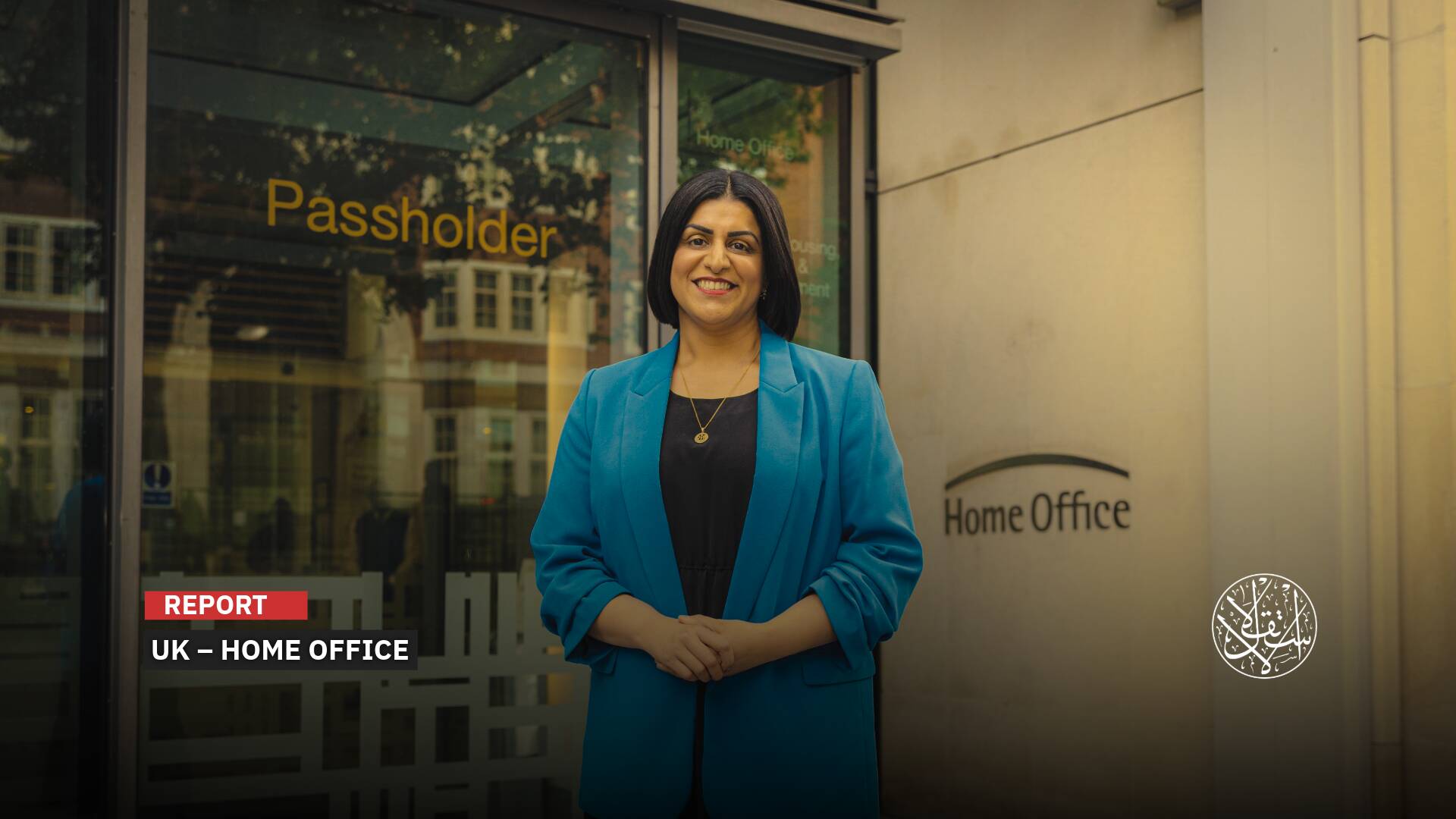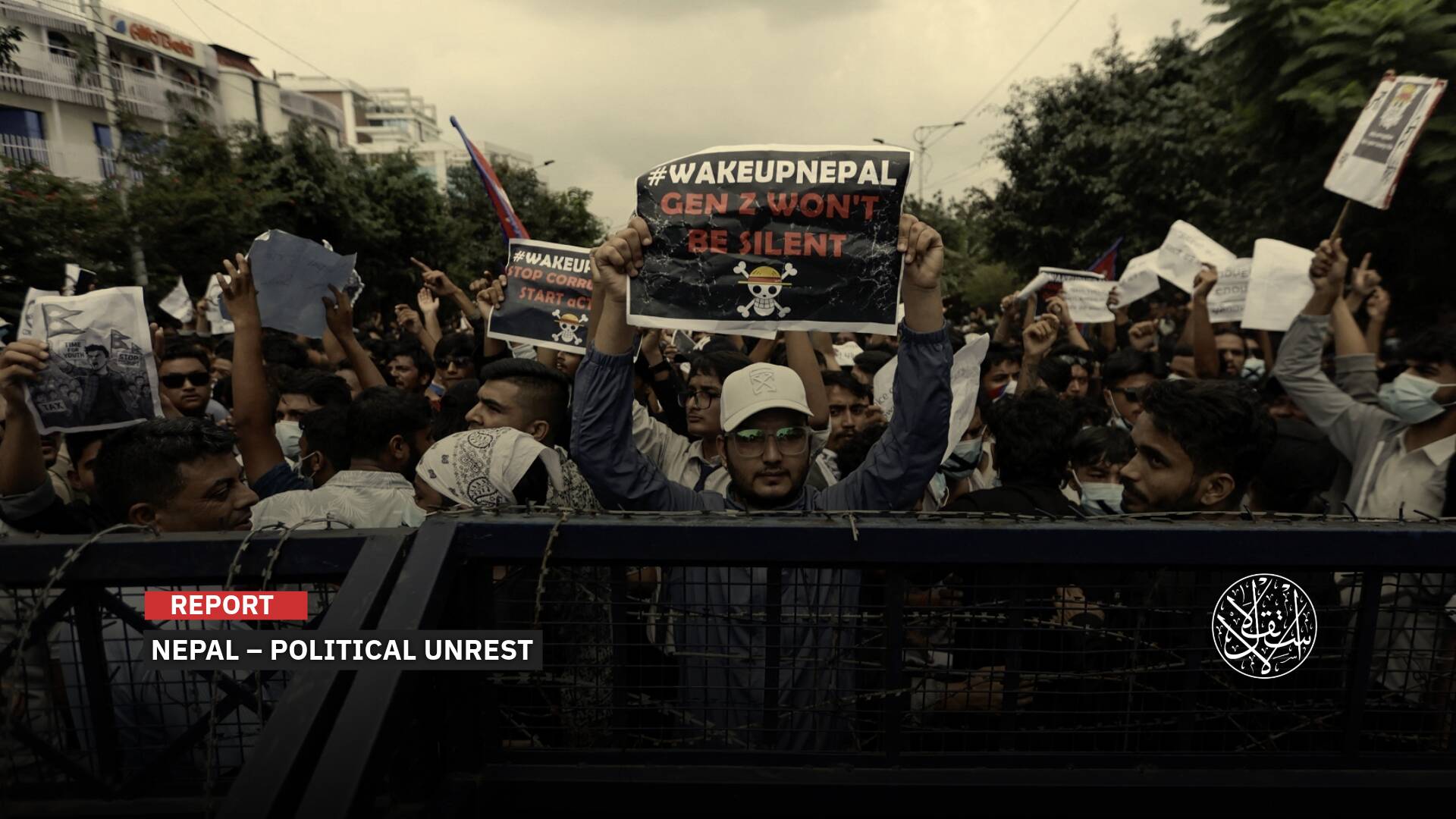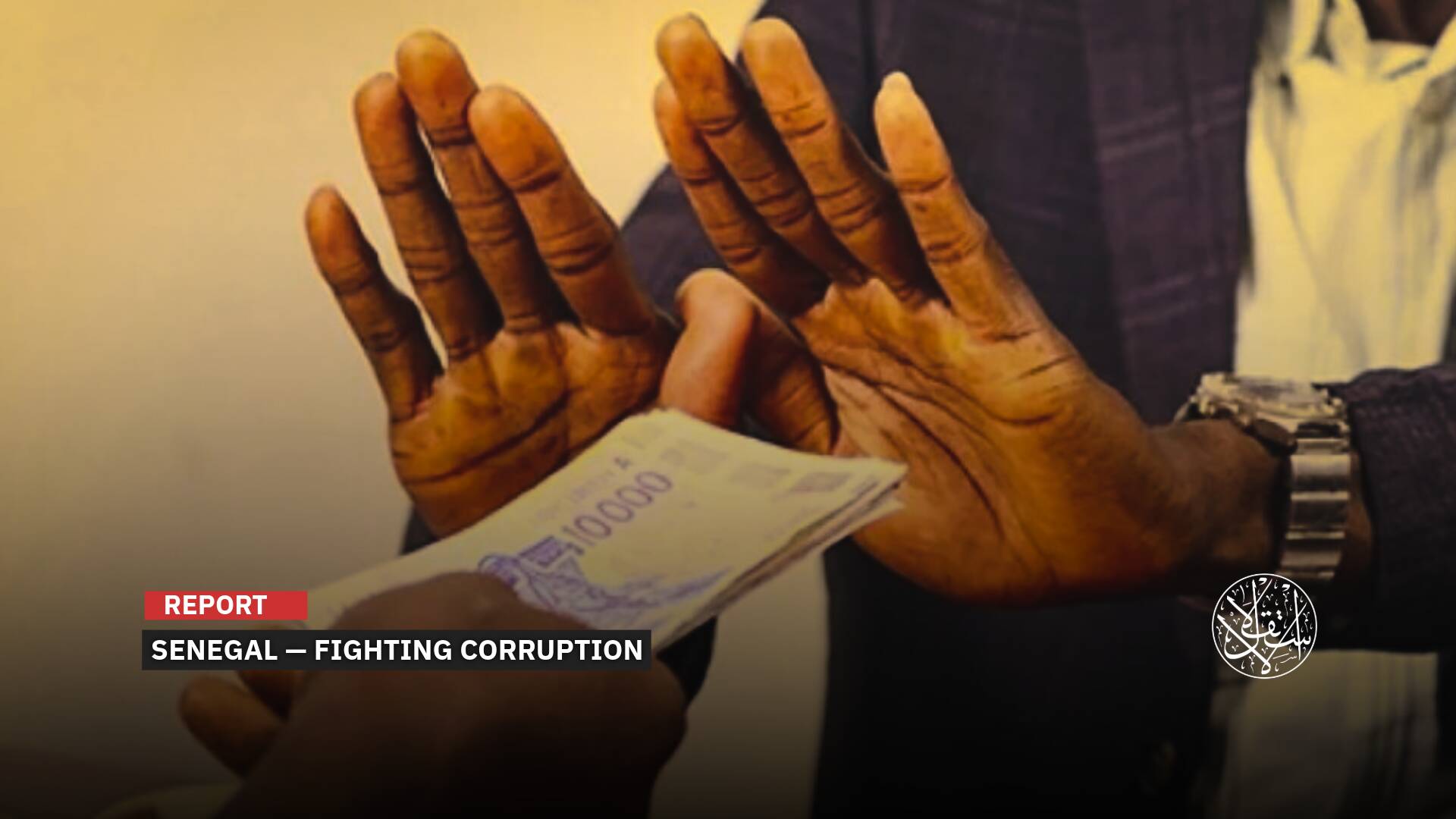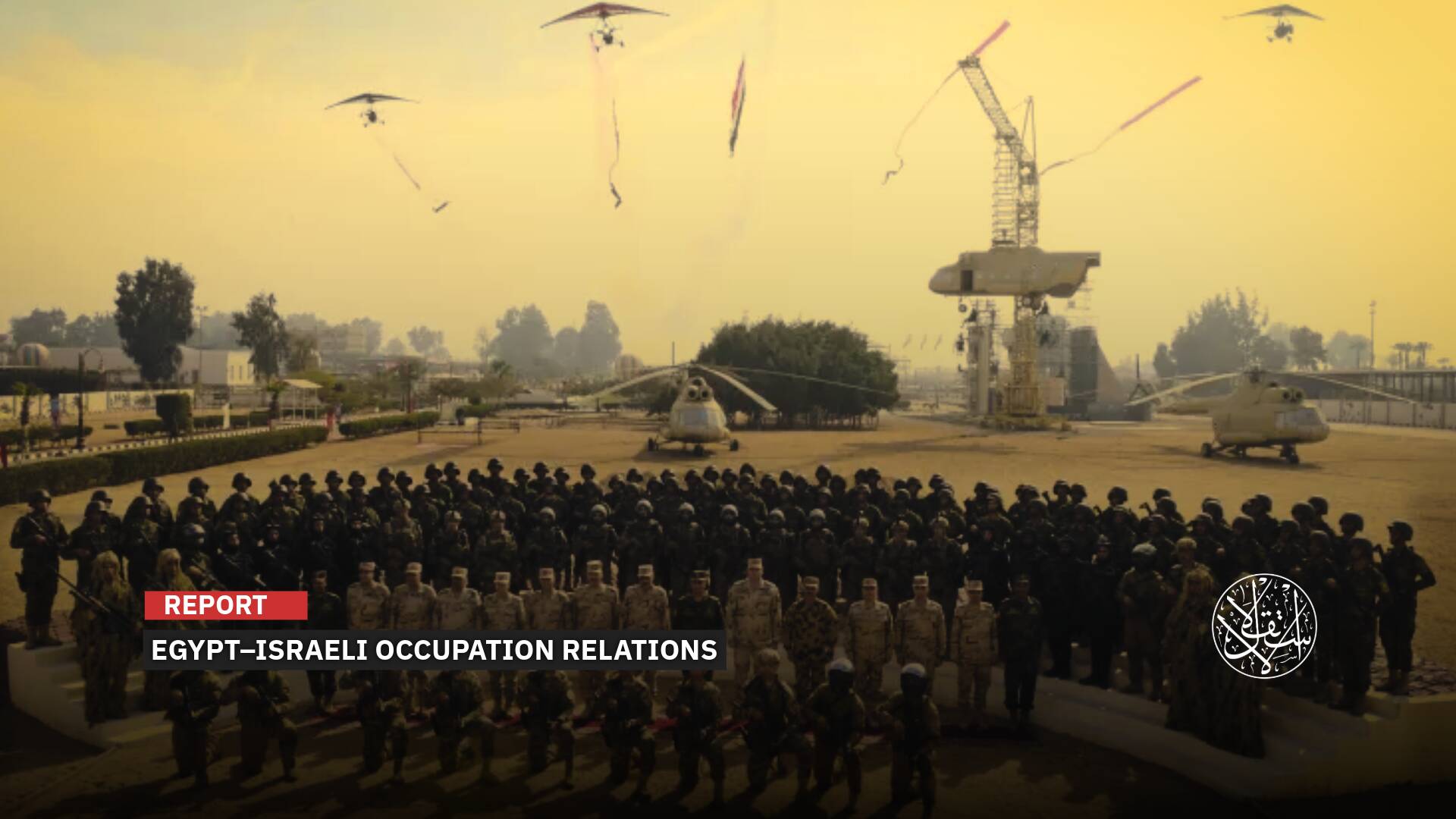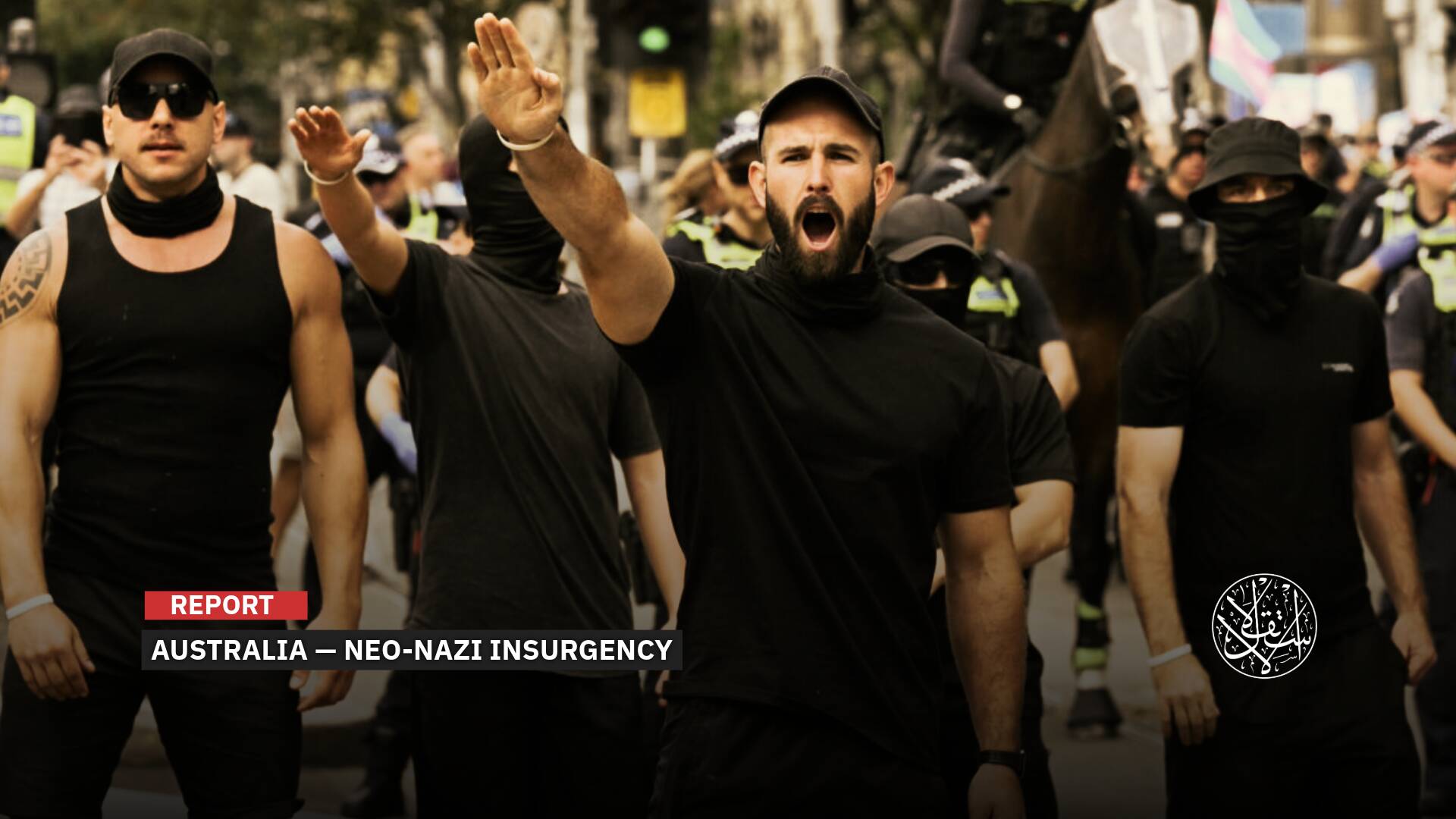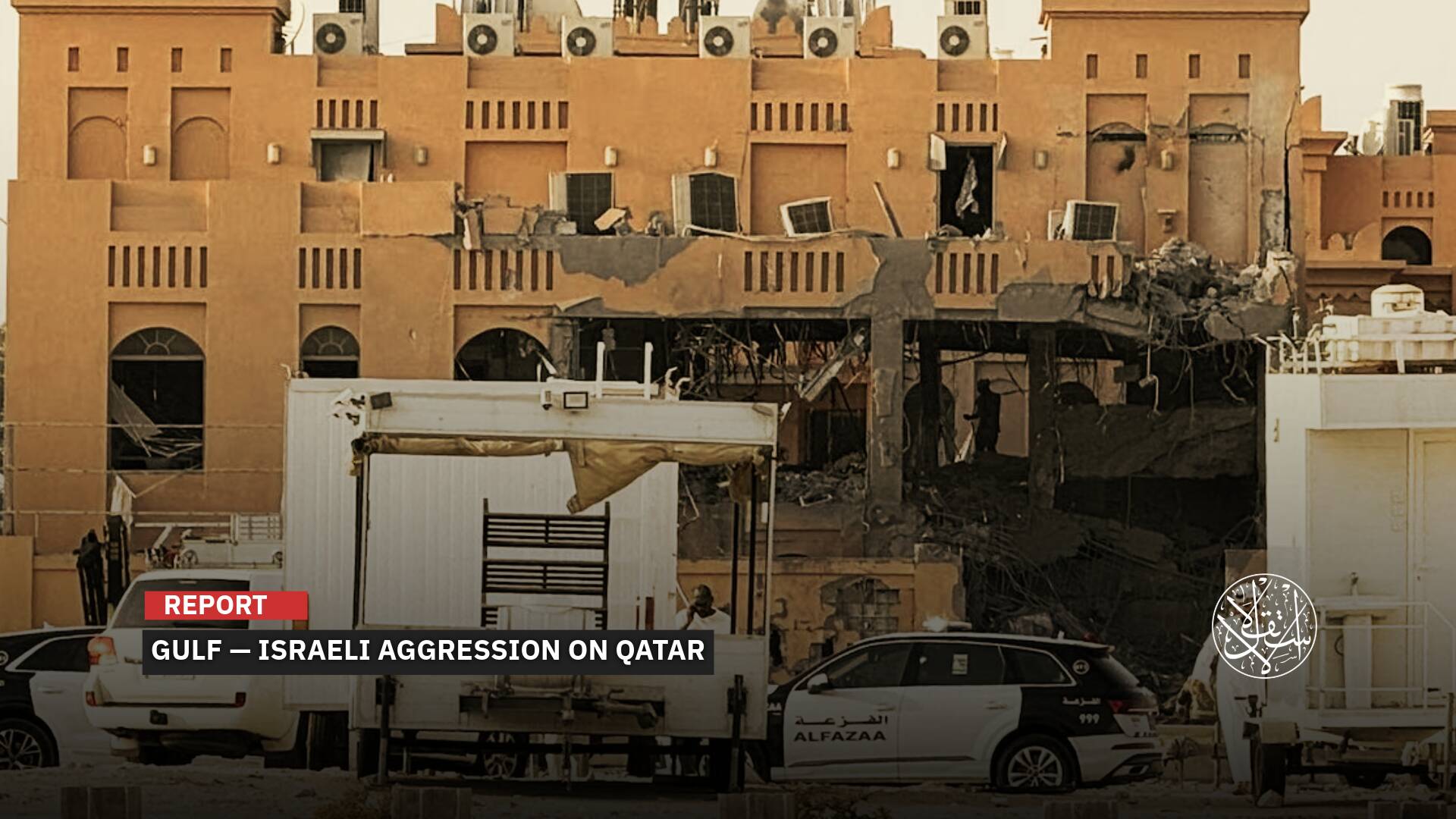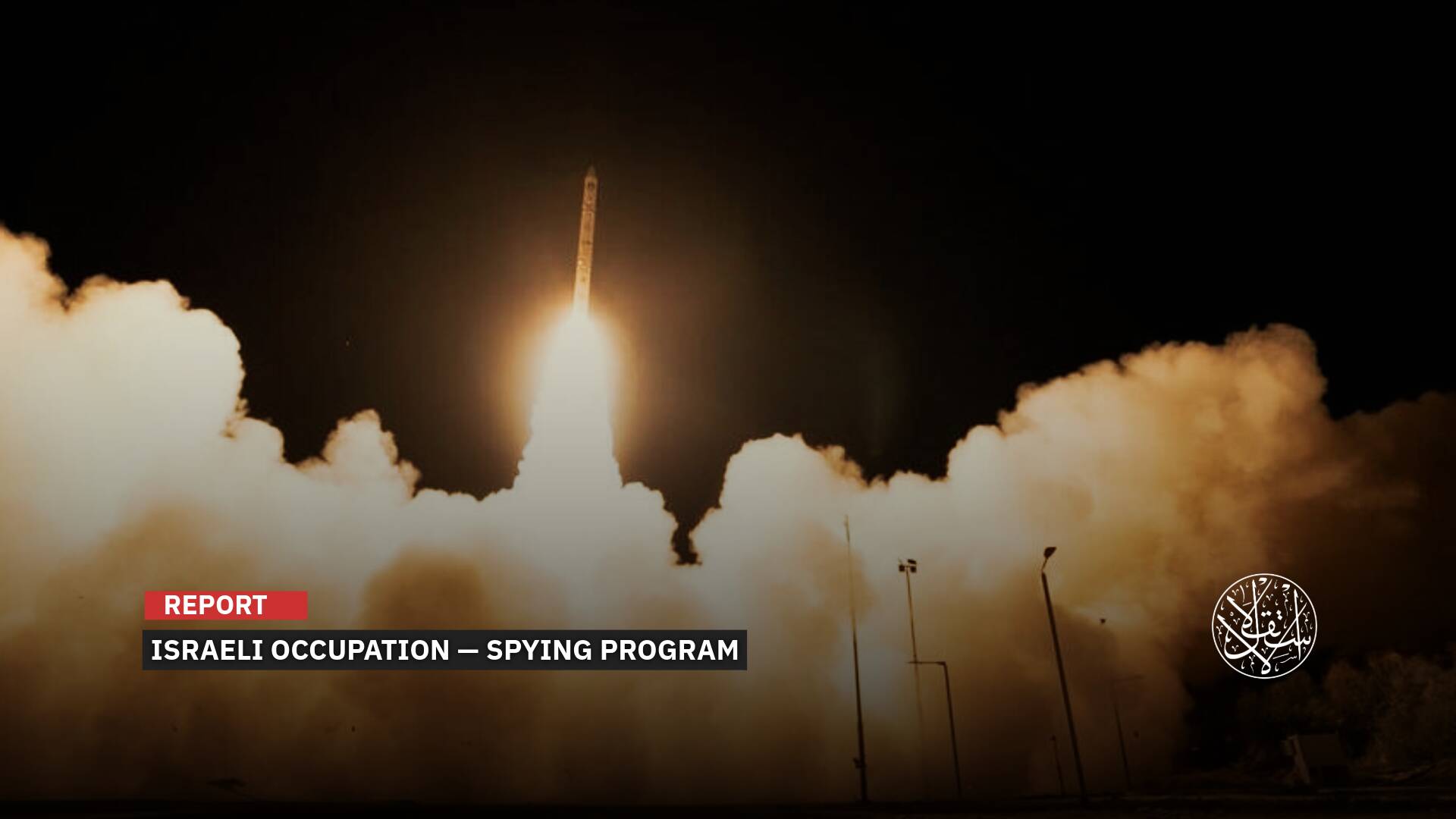In an Exclusive Interview: Gaza Official Urges Urgent Action, Outlines 3 Post-Genocide Paths

“Israel is deliberately blocking the entry of cash into Gaza to cripple what remains of the Palestinian economy.”
Since the start of the Israeli genocide in Gaza, no aspect of life has been spared from destruction. Systematic bombings have devastated the infrastructure and essential services managed by local municipalities, including water, sewage, sanitation, roads, and public facilities, in a clear attempt to make the territory uninhabitable.
Amid this catastrophic reality, the rubble from the targeted destruction of residential areas and infrastructure is estimated to exceed 60 million tons, reflecting the unprecedented scale of devastation Gaza is facing.
To better understand this destruction, its impact on municipalities, and the emergency plans to salvage what remains, Al-Estiklal interviewed Deputy Head of the Union of Gaza Strip Municipalities and Khan Younis Mayor, Alaa el-Din al-Batta. He discussed the scale of the disaster, the daily challenges, and how the ongoing blockade continues to undermine municipal operations under Israeli aggression.
During the interview, al-Batta called for an international investigation committee to visit Gaza and assess the damage to both people and infrastructure.
With U.S. support, “Israel” has been committing acts of genocide in Gaza since October 7, 2023, leaving more than 167,000 Palestinians killed or wounded, most of them women and children, and over 11,000 still missing.

Ongoing Genocide
• How do you assess the scale of destruction caused by Israel’s genocidal war on Gaza?
The Israeli Occupation has deliberately targeted every aspect of life in Gaza throughout its brutal and ongoing assault on our people, including the services provided by the municipalities, water, sewage, sanitation, roadworks, and paving.
It has also devastated the health system and the environmental sector in an attempt to make Gaza uninhabitable. More than 60 million tons of rubble now fill the Strip as a result of Israel’s targeting of residential areas, roads, water wells, and sewage networks.
In Khan Younis alone, the municipality estimates that the damage to its assets, service facilities, roads, sanitation systems, water networks, and operational infrastructure amounts to $500 million.
• Which municipal sectors were most affected?
Khan Younis was heavily affected by Israeli destruction and bulldozing. Over 350 kilometers of water lines, more than 86%, were damaged. 34 kilometers of stormwater drainage lines were also destroyed, exceeding 90%.
Four out of five underground water reservoirs, with a combined capacity of 20,000 cubic meters, were knocked out of service due to direct structural and operational targeting. Sixty generators used to operate water wells were destroyed, along with 40 of the city’s 44 wells. Over 125 kilometers of roads, more than 80%, were also damaged.
• Were any municipal facilities or employees directly targeted during the war?
Yes, the Israeli Occupation deliberately destroyed almost everything in sight. Municipal buildings and facilities were not spared from this systematic destruction. Eighteen municipal employees were killed while carrying out their duties.
As for public facilities, the Israeli Occupation targeted 37 public parks, 6 local markets, and destroyed the only municipal slaughterhouse in southern Gaza.
In addition, 40 service facilities, 9 administrative buildings, 7 commercial properties belonging to the municipality, and 6 public squares were bulldozed. Three major sports fields, effectively all the city's stadiums, were also destroyed, along with 4 mid-sized synthetic turf fields used for sports and public activities.
• How has this destruction impacted the daily delivery of essential services to residents?
Most essential services, especially in water, health, and environmental sectors, have been severely affected. It’s nearly impossible to provide them amid scarce resources, limited capacity, and the extensive damage to infrastructure that has been repeatedly targeted by Israeli forces throughout the war.
Residents are left waiting for essential services, while we do everything we can to provide even a small portion to ease the burden on displaced families. However, urgent international intervention and support from donor agencies are desperately needed to ensure these services can continue, at the very least at a minimal level.

Post-War Phase
The municipalities’ post-war recovery plan follows three main tracks:
The first is clearing rubble from streets and neighborhoods to reopen them completely, then moving on to residential buildings. The debris will be collected at designated sites, with the possibility of recycling or repurposing it later.
The second track focuses on restoring essential services in water, health, and sanitation by repairing the severely damaged infrastructure.
The third is about reviving life in Gaza through reconstruction and rebuilding efforts.
All of this remains dependent on fieldwork and the limited resources available to municipalities, most of which have suffered extensive damage that has significantly hindered their ability to serve residents.
• What are the top priorities for the Union of Municipalities in responding to the war's aftermath?
Stopping Israel’s aggression is the top priority. After that, clearing the overwhelming amount of rubble, estimated at 60 million tons, from streets and residential areas, is essential to begin recovery. This is a staggering volume considering Gaza’s small size.
• Is there a unified emergency response plan between municipalities?
Each municipality or group of municipalities, such as those in Gaza City, the central governorate, Khan Younis, or Rafah, responds based on local conditions and available resources. While they follow shared general guidelines, the details vary. Overall, coordination is strong and aimed at joint efforts to support displaced residents and ease their suffering.
• How is coordination managed among different municipalities?
Municipalities hold regular meetings, either in person or via online platforms, to coordinate efforts. In Khan Younis, for instance, seven municipalities work closely together to improve services for both residents and the displaced.

We call for an international investigation committee to visit Gaza and assess the damage to both people and infrastructure.
• What are your key sources for rehabilitation, and is there any external support?
One of the main sources we rely on for rehabilitation is our direct partnership with the Coastal Municipalities Water Utility, which plays a vital role in operating water and sewage systems, as well as partially repairing the damage caused by the Israeli attacks.
We’ve also engaged with the ‘Gallant Knight 3’ initiative and implemented emergency water and sanitation projects. We’re also working with several international donors who are contributing to service delivery for residents. Importantly, we receive tremendous support from the local community, which plays a crucial role on the ground.
• Do you have ready-to-launch reconstruction projects awaiting funding?
Absolutely. We've prepared hundreds of projects, from small and urgent to large-scale, ready for implementation. Some have already been submitted to donors, and we’re awaiting the end of hostilities to begin reconstruction.
The ongoing Israeli war, however, remains the main obstacle. The destruction is escalating daily, entire cities and roads are turning into rubble within a week, leaving no trace behind and compounding the humanitarian, health, and environmental crises.
• How are citizens involved in rehabilitation or reporting damage?
We work closely with local communities through neighborhood committees, which maintain strong ties with Khan Younis Municipality. These committees helped us remove around 90,000 tons of rubble that had blocked major roads and obstructed service delivery.
Through community cooperation, we also managed to operate 230 privately owned submersible pumps by providing 30,000 liters of diesel for water distribution to residents and displaced people. We supplied 4,000 gas cylinders to power private wells.
We’ve also restarted five small desalination stations in neighborhoods and displacement centers to supply drinking water. We laid 53,000 meters of surface water pipelines to distribute clean water and established 400 water access points for residents and displaced families.

Funding and Challenges Under the Siege
• To what extent does the Israeli blockade affect the municipalities’ ability to function?
Since the imposition of the Israeli blockade on Gaza around 2006, municipalities have faced severe obstacles in delivering services to residents. The blockade has hindered the implementation of major strategic projects and inflicted significant losses on many development initiatives carried out by Gaza’s municipalities.
During the current war, the Israeli Occupation has deliberately targeted service infrastructure, including municipal equipment, water wells, road networks, and sewage systems. It has also blocked the entry of diesel fuel and essential parts needed to maintain aging machinery, much of which has been in service for over 30 years. These restrictions have left municipalities paralyzed, unable to provide basic services under the current harsh conditions.
• What are the most pressing financial challenges you face today?
One of the main financial challenges is the Israeli effort to block cash flow into Gaza, aiming to dismantle what remains of the Palestinian economy, which heavily relies on the Israeli Occupation power.
International financial aid is also subject to strict scrutiny and major obstacles that hinder its arrival. All of this is part of a broader policy to render Gaza uninhabitable, undermining municipalities, preventing them from implementing service improvement plans, and derailing reconstruction efforts.
• Is there any support from the Gaza government or international organizations to help fill the gap?
There is virtually no support from the Gaza government. When any support is available, it’s minimal and only helps prevent a complete municipal collapse. The government itself is part of the broader service system and faces severe restrictions and pressure.
Some emergency and small-scale projects are being supported by international organizations, mainly through the Coastal Municipalities Water Utility, which manages water and sanitation services to prevent disease outbreaks amid the systematic destruction of infrastructure.
• How much do you rely on international donors, and is there genuine support?
Most of the projects implemented in Gaza are funded by international donors, typically through the Coastal Municipalities Water Utility, the Palestinian Water Authority, and humanitarian organizations that occasionally intervene to contain public health hazards.
The United Nations Development Programme [UNDP], for instance, has carried out several vital projects, including removing concrete debris from major roads at over 68 locations and relocating a temporary waste dump near al-Aqsa University’s western wall to a new site north of al-Amal neighborhood.
Other small and urgent projects have been executed, and the International Committee of the Red Cross launched a ‘cash-for-work’ initiative employing sanitation workers to collect and remove waste from streets, neighborhoods, and displacement centers.

The Humanitarian and Public Service Dimension
• How are municipalities addressing waste accumulation and water contamination under the current conditions?
Over 250,000 tons of waste have piled up in temporary dump sites, as transferring garbage to the main sanitary landfill located east of al-Fukhari in eastern Khan Younis has become impossible due to the area’s extreme danger since the start of the Israeli war.
The buildup of waste, particularly at these temporary sites, has worsened the humanitarian crisis for both residents and displaced people. A major concern for the municipality has been the risk of toxic leachate from the waste seeping into the ground and contaminating the aquifer. We secured a project with UNDP to relocate the waste to an alternative landfill.
• Are there areas currently at risk of environmental or health disasters due to infrastructure collapse?
Most areas in the Gaza Strip are at risk of severe environmental and health disasters due to the collapse of basic infrastructure. Low-lying areas are flooded with sewage and rainwater as a result of the widespread destruction of roads, neighborhoods, sewage networks, and water systems. The Israeli Occupation has targeted much of the road infrastructure, further exacerbating the crisis.
• How are you ensuring access to clean water and proper sanitation in affected areas?
We’ve managed to implement a number of emergency and small-scale projects, including laying temporary water networks and repairing some sewage lines damaged by Israeli strikes. However, these interventions are strictly emergency measures; they help reduce harm but do not provide lasting solutions. We urgently need large-scale reconstruction projects to rebuild what has been destroyed during the war.
• Have municipal emergency and rescue services been impacted? How did you cope during the war?
Yes, they have been severely affected. Israeli forces targeted emergency crews directly. 18 municipal workers were attacked while on duty. This has resulted in a significant shortage of manpower. Despite the risks, many emergency workers continue to operate under life-threatening conditions. This affects the delivery of services, especially amid the massive destruction of infrastructure, roads, and the environmental and public health systems.

Future Outlook and Accountability
• What is your plan to prevent the collapse of municipalities if the crises persist?
We operate within the limits of available resources and work in close coordination with other municipalities, sharing responsibilities and efforts to serve our people and alleviate their suffering.
However, all plans remain fragile and uncertain due to multiple factors, most notably the ongoing aggression, closure of crossings, and the deliberate targeting of essential services.
If the aggression ends, there is hope. We have plans in place that can be implemented progressively in cooperation with the international community, donors, and relevant institutions.
• How are you documenting and following up on violations against municipal facilities?
Following the Israeli withdrawal from Khan Younis, we documented all the damage inflicted on the municipality, its facilities, and service infrastructure. We have submitted these records to the relevant authorities for further action.
• Are you calling for an international investigation or UN intervention regarding the destruction of infrastructure?
Yes, we are calling for an international investigation and urge UN bodies to visit Gaza to witness firsthand the scale of destruction inflicted on municipalities.
• What message would you like to convey to the Palestinian public and the international community?
To Palestinians: Unity is essential. To the international community: Act urgently to stop the aggression that has devastated Gaza and begin immediate reconstruction efforts.
• What role should the media play in highlighting the suffering of municipalities?
The media plays a vital role in revealing the extent of destruction in Gaza and drawing attention to the humanitarian crisis facing municipalities.


